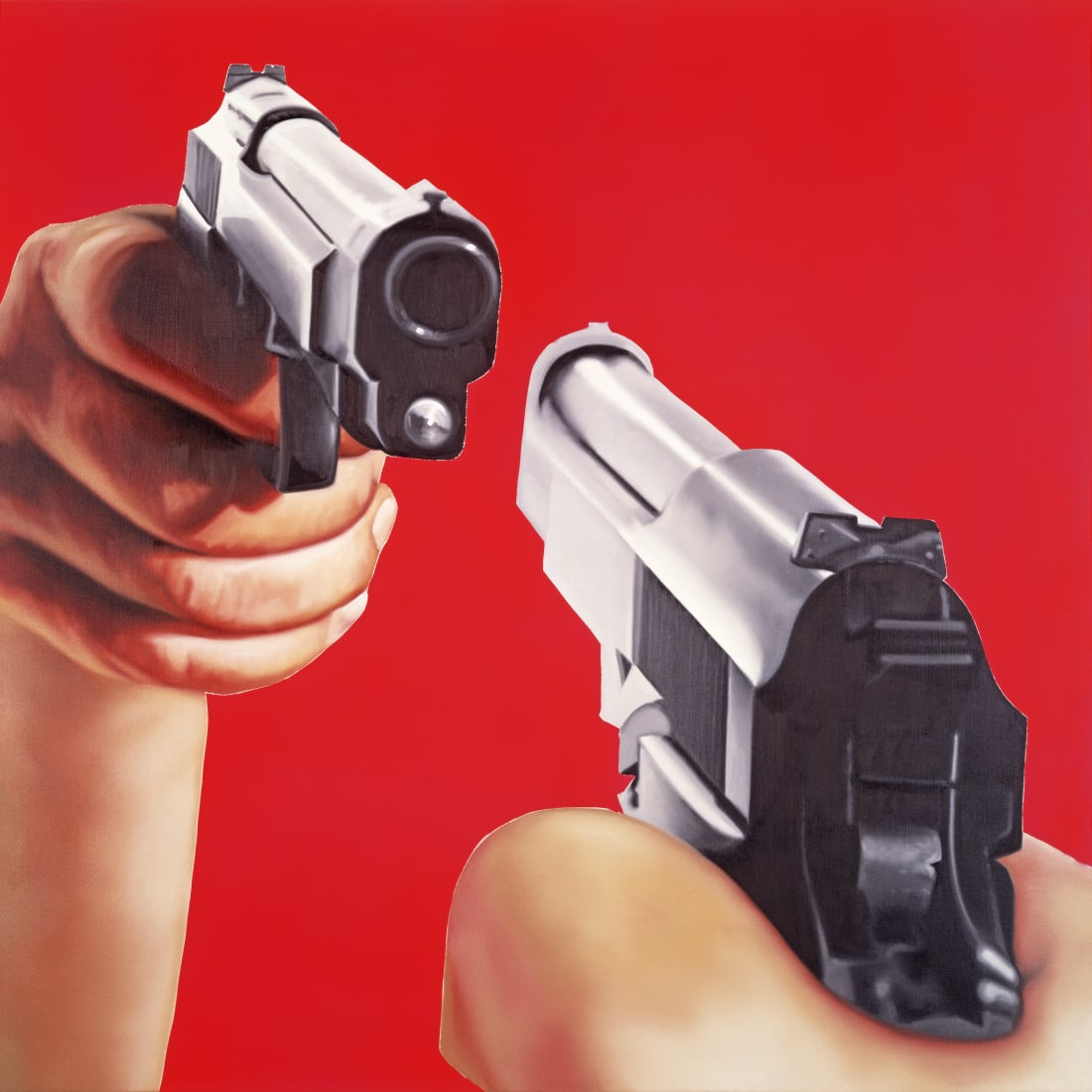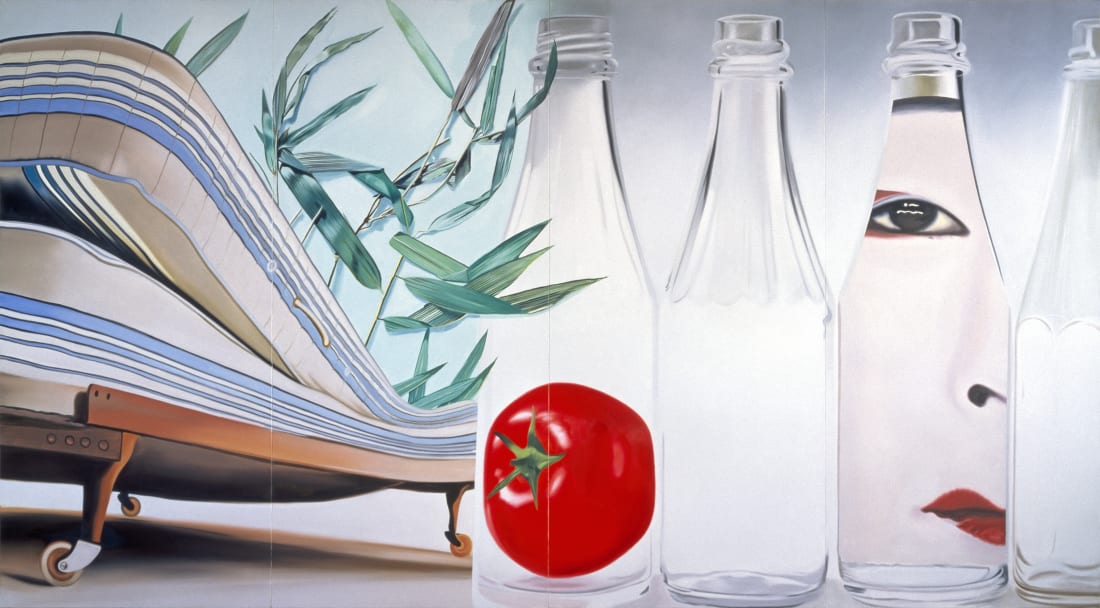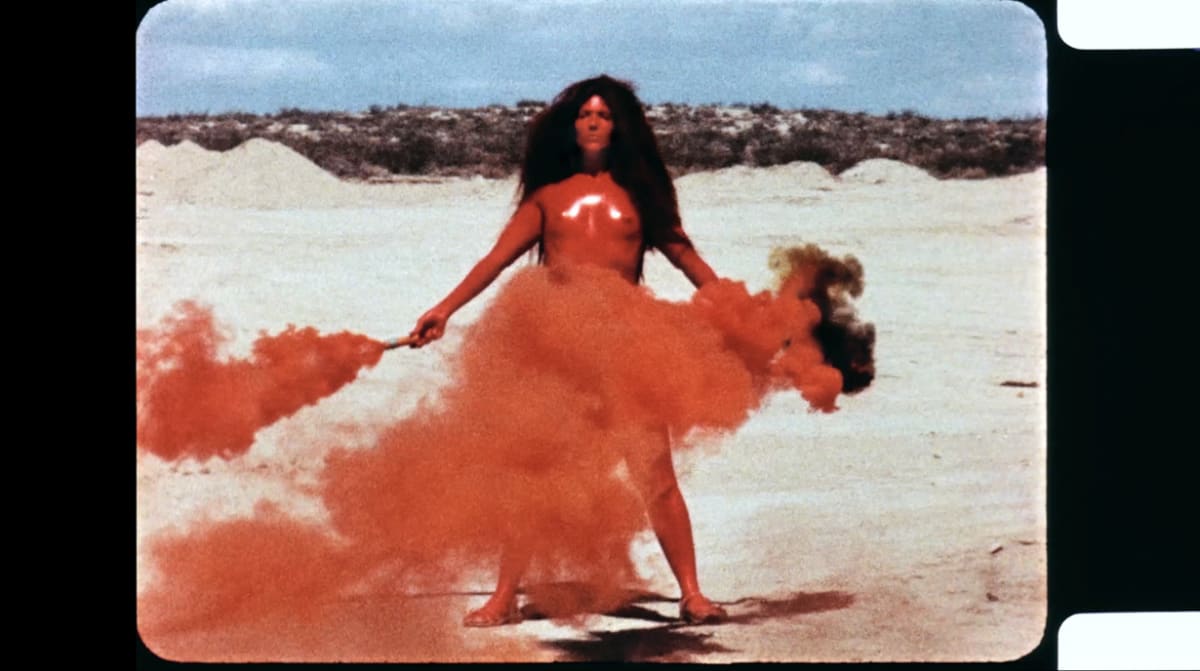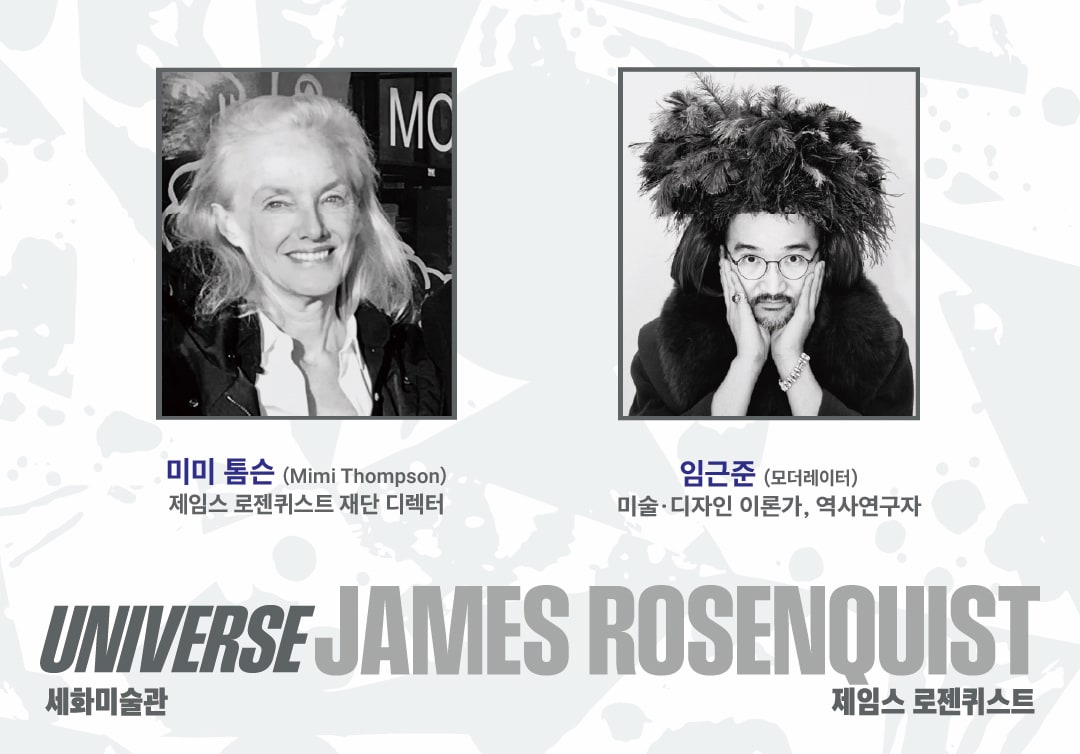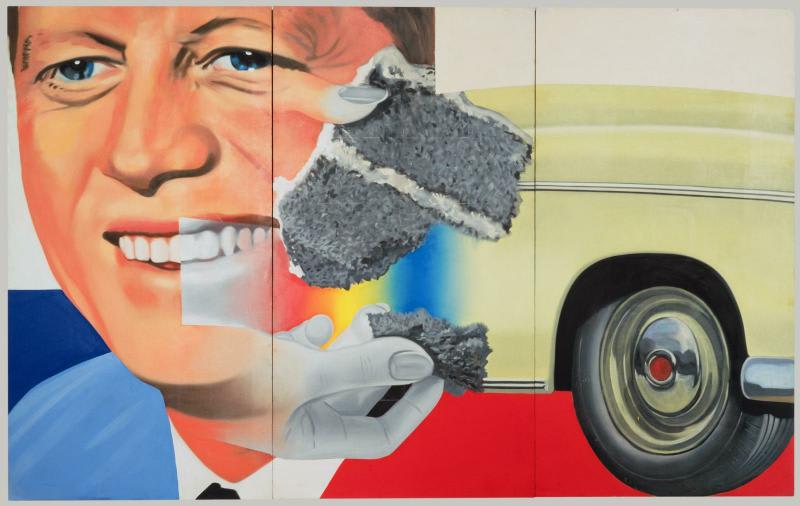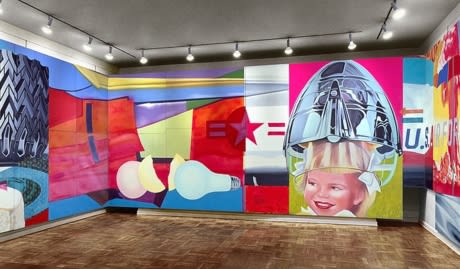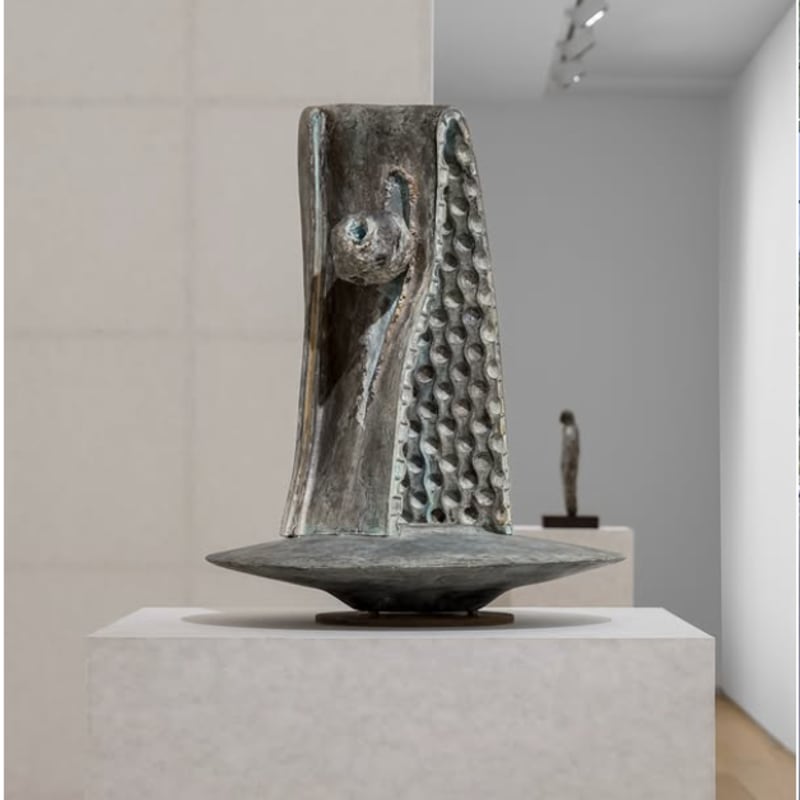
James Rosenquist Estate
Overview
'I want people who look at my paintings to be able to pass through the illusory surface of the canvas and enter a space where the ideas in my head collide with theirs.'
James Rosenquist became known in the 1960s as a leading American Pop artist alongside Andy Warhol, Roy Lichtenstein, Claes Oldenburg and others. While each developed a distinct style, there were commonalities in their approaches to image-making that helped define the Pop art movement: the use of commercial art techniques and the depiction of popular imagery and everyday objects. As with his contemporaries, Rosenquist's background in billboard painting deeply influenced his nascent fine-art career, expanding the boundaries of his medium in an era that redefined the field of painting. His works tested the possibilities of perception, of the image and of the painted medium itself, combining figuration, collage and found objects to convey the contradictions inherent to the American experience.
Born in Grand Forks, North Dakota in 1933, Rosenquist studied art at the University of Minnesota (1952-54) before enrolling at the Art Students League, New York, also frequenting the Cedar Tavern where he met painters Willem de Kooning, Franz Kline and Milton Resnick. Working as a painter of monumental advertising billboards and painting abstract canvases in his spare time, in 1960 he abandoned commercial painting and set up a studio in Coenties Slip, New York. By cropping, fragmenting and re-colouring images from magazines, combined with the skills and gestures of sign-painting, Rosenquist developed a new language that differentiated him from the second generation of Abstract Expressionists and set him apart from his peers. Utilising techniques borrowed from advertising, described by the late American curator Walter Hopps as 'visual poetry', his work has plumbed questions ranging from the economic, romantic, and ecological to the scientific, cosmic and existential.
James Rosenquist became known in the 1960s as a leading American Pop artist alongside Andy Warhol, Roy Lichtenstein, Claes Oldenburg and others. While each developed a distinct style, there were commonalities in their approaches to image-making that helped define the Pop art movement: the use of commercial art techniques and the depiction of popular imagery and everyday objects. As with his contemporaries, Rosenquist's background in billboard painting deeply influenced his nascent fine-art career, expanding the boundaries of his medium in an era that redefined the field of painting. His works tested the possibilities of perception, of the image and of the painted medium itself, combining figuration, collage and found objects to convey the contradictions inherent to the American experience.
Born in Grand Forks, North Dakota in 1933, Rosenquist studied art at the University of Minnesota (1952-54) before enrolling at the Art Students League, New York, also frequenting the Cedar Tavern where he met painters Willem de Kooning, Franz Kline and Milton Resnick. Working as a painter of monumental advertising billboards and painting abstract canvases in his spare time, in 1960 he abandoned commercial painting and set up a studio in Coenties Slip, New York. By cropping, fragmenting and re-colouring images from magazines, combined with the skills and gestures of sign-painting, Rosenquist developed a new language that differentiated him from the second generation of Abstract Expressionists and set him apart from his peers. Utilising techniques borrowed from advertising, described by the late American curator Walter Hopps as 'visual poetry', his work has plumbed questions ranging from the economic, romantic, and ecological to the scientific, cosmic and existential.
Creating seminal work over more than five decades, Rosenquist consistently demonstrated his mastery of painting, collage, drawing and printmaking. His first solo exhibition was at Richard Bellamy's Green Gallery in 1962, followed by his inclusion in Six Painters and the Object at the Solomon R. Guggenheim Museum in 1963, curated by Lawrence Alloway and including works by Jim Dine, Jasper Johns, Roy Lichtenstein, Robert Rauschenberg and Andy Warhol. Organised by the Denver Art Museum in 1985, James Rosenquist: Paintings 1961–1985 travelled to the Contemporary Arts Museum, Houston; Des Moines Art Center; Albright-Knox Art Gallery, Buffalo; Whitney Museum of American Art, New York; and National Museum of American Art, Washington, D.C. In 1991, his exhibition at the Tretyakov Gallery, Moscow was one of the first by an American artist in Russia since the Cold War. Between 2003 and 2005, his work was shown in a career retrospective organised by the Solomon R. Guggenheim Museum, New York, which travelled to the Menil Collection and the Museum of Fine Arts in Houston; Guggenheim Museum Bilbao; and Kunstmuseum Wolfsburg. Following the artist's death in 2017, his work was shown in the survey exhibition James Rosenquist: Painting as Immersion at Museum Ludwig, Cologne and ArOS Aarhus Art Museum, Denmark.
Videos

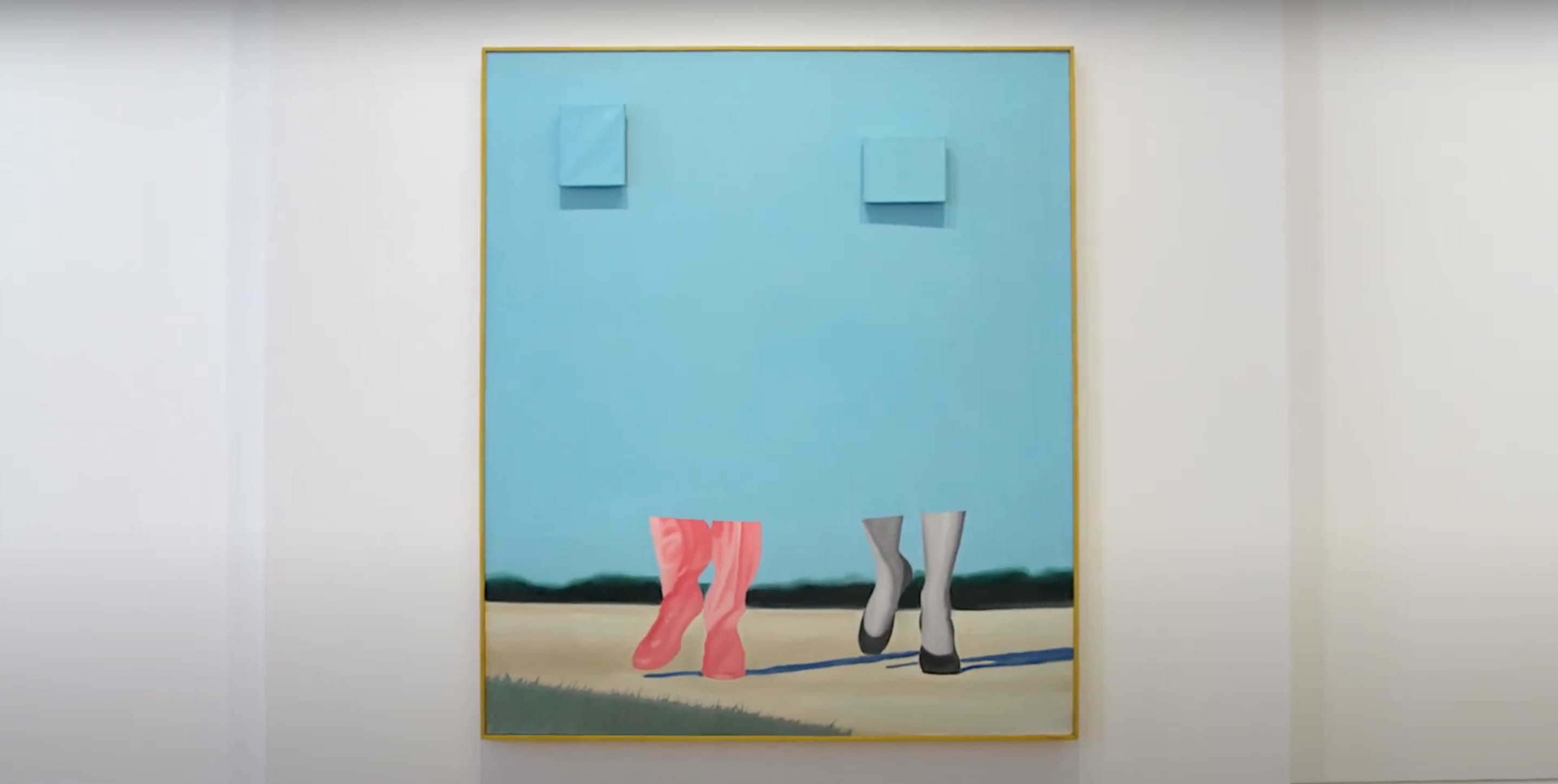



Artworks
Exhibitions
Publications


